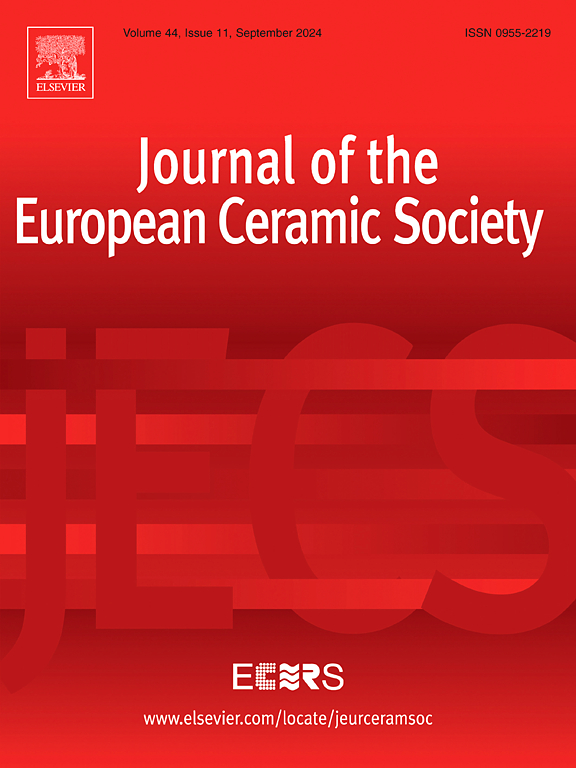Effect of doping-induced MnO6 distortion on the phase transition temperature and emissivity of LaMnO3-based materials
IF 5.8
2区 材料科学
Q1 MATERIALS SCIENCE, CERAMICS
Journal of The European Ceramic Society
Pub Date : 2025-02-21
DOI:10.1016/j.jeurceramsoc.2025.117318
引用次数: 0
Abstract
Large variable emissivity materials play a key role in smart thermal control. However, conventional variable emissivity materials have limitations, including insufficient variability and unclear understanding of how phase-change temperature and emissivity variation relates. In this study, LaMnO3-based (ABO3) perovskite materials doped with ions of varying radii were prepared. Among them, La0.7Ba0.2Cd0.1MnO3 showed a variable emissivity of 0.467 and a Curie temperature of 290 K. Combining experimental studies with density functional theory calculation reveals that the mechanism for tuning the Curie temperature is linked to the displacement of A-site ions, resulting from the distortion of the MnO6 octahedron. Besides, the variable emissivity mechanism is explained by the densities of states, which decrease as Mn-O bond strength increases. This work explores the mechanism of phase transition temperature and emissivity changes from an intrinsic crystal structural perspective and will provide theoretical foundations for improving variable emissivity properties of smart thermal control systems.
求助全文
约1分钟内获得全文
求助全文
来源期刊

Journal of The European Ceramic Society
工程技术-材料科学:硅酸盐
CiteScore
10.70
自引率
12.30%
发文量
863
审稿时长
35 days
期刊介绍:
The Journal of the European Ceramic Society publishes the results of original research and reviews relating to ceramic materials. Papers of either an experimental or theoretical character will be welcomed on a fully international basis. The emphasis is on novel generic science concerning the relationships between processing, microstructure and properties of polycrystalline ceramics consolidated at high temperature. Papers may relate to any of the conventional categories of ceramic: structural, functional, traditional or composite. The central objective is to sustain a high standard of research quality by means of appropriate reviewing procedures.
 求助内容:
求助内容: 应助结果提醒方式:
应助结果提醒方式:


